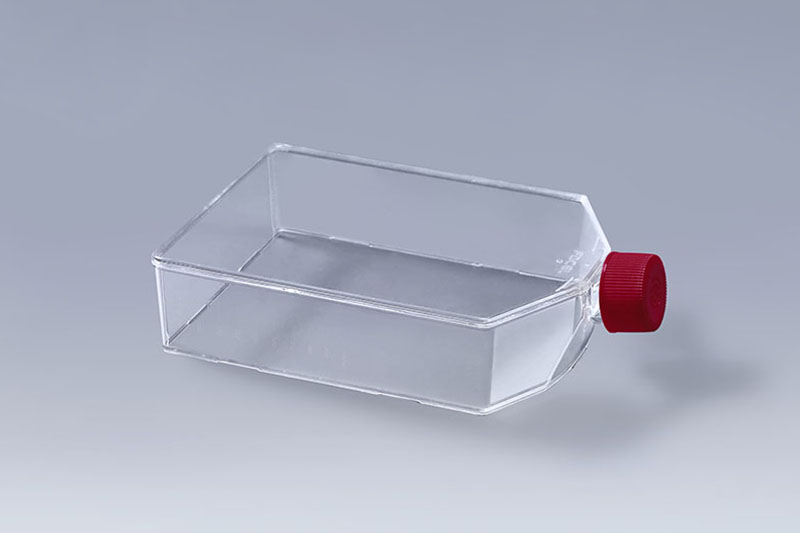When conducting cell culture experiments, cell culture flasks are a tool that we often use. Its specifications range from 25cm² to 225cm², which can meet the needs of different scales of cell culture. As a common tool, this consumable has the following three characteristics:
1. Torticollar design: The neck of the cell culture flask adopts a torticollar design, which makes it easier for pipettes and cell scrapers to enter the interior, and there is no dead angle in contact, which is convenient for researchers to operate.
2. Two kinds of covers: According to the different culture environment, this consumable has two kinds of covers, airtight cover and air-permeable cover. Caps are often used for closed cultures, but can also be used for open cultures when the caps are unscrewed. The breathable cover is suitable for open culture. The cover is equipped with a 0.2um hydrophobic filter membrane to avoid possible cross-infection during gas exchange. It is generally recommended for cultivation in a carbon dioxide incubator, especially for experiments that require long-term cultivation.
3. Two types of surfaces: According to different growth methods, cells are divided into two types: adherent and suspension. Adherent cells need to attach to the surface of the object to grow, and the cell culture flask is made of polystyrene raw materials, which is not conducive to cell attachment, so special surface treatment is required to be suitable for cell attachment growth. Suspension cells do not have this requirement, but generally treated surfaces are also suitable for suspension cell growth.
The above are the three major characteristics of cell culture flasks. When selecting cell culture consumables, we should choose the appropriate cover and growth surface according to the growth requirements of the cells and the culture environment.
The FAI climbed 5.9 percent year-on-year in the first 11 months of 2018, quickening from the 5.7-percent growth in Jan-Oct, the National Bureau of Statistics (NBS) said Friday in an online statement.
The key indicator of investment, dubbed a major growth driver, hit the bottom in August and has since started to rebound steadily.
In the face of emerging economic challenges home and abroad, China has stepped up efforts to stabilize investment, in particular rolling out measures to motivate private investors and channel funds into infrastructure.
Friday's data showed private investment, accounting for more than 60 percent of the total FAI, expanded by a brisk 8.7 percent.
NBS spokesperson Mao Shengyong said funds into weak economic links registered rapid increases as investment in environmental protection and agriculture jumped 42 percent and 12.5 percent respectively, much faster than the average.
In breakdown, investment in high-tech and equipment manufacturing remained vigorous with 16.1-percent and 11.6-percent increases respectively in the first 11 months. Infrastructure investment gained 3.7 percent, staying flat. Investment in property development rose 9.7 percent, also unchanged.
 English
English



















































 T225 Cell Culture Flasks
T225 Cell Culture Flasks